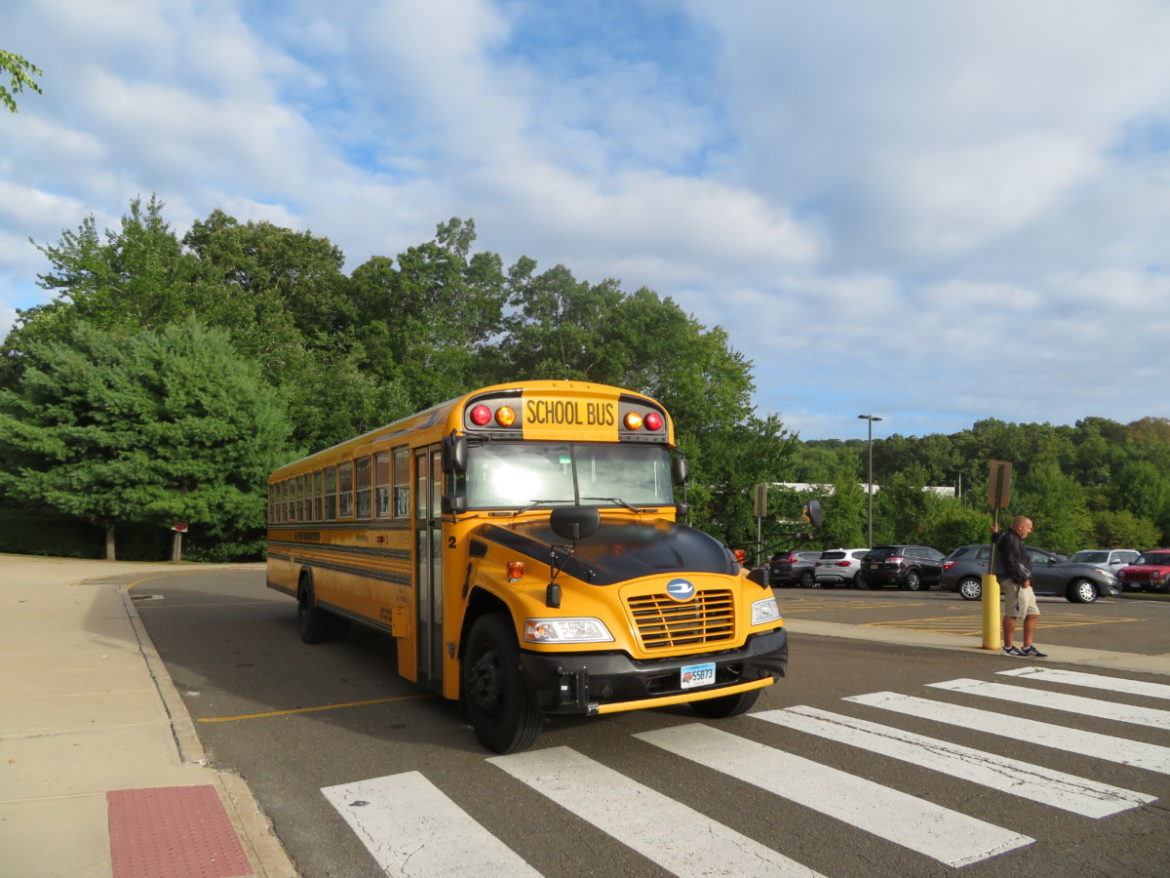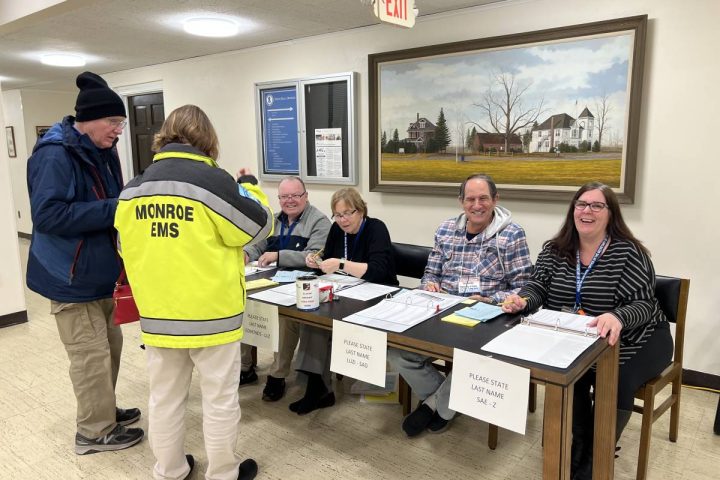MONROE, CT — Could lunches students can heat up at home, like fried macaroni and cheese and chicken nuggets, entice more families to participate in the National School Lunch Program? Sodexo, the food vendor for Monroe public schools, sent out a survey Monday to learn what menu items kids find most appealing.
All students are eligible for free school breakfasts and lunches this year, regardless of economic need. Meals are prepared and picked up at Fawn Hollow Elementary School, but Board of Education Chairwoman Donna Lane recalls telling Alan Dean, district manager of Sodexo Education School Services, it has to be worth the trip.
“From a parent’s perspective, I said to him, ‘listen, I have two kids in the system. Neither one of them are going to eat this cold ham sandwich or the Nutter Butter and jelly,'” Lane said at Monday night’s board meeting. “‘I’m not driving all the way up to Fawn Hollow to pick up two sandwiches to throw out it in the garbage, so I just choose not to participate for that reason, because it’s a waste for me.'”
A significant drop in school lunch sales caused by the COVID-19 pandemic led to a projected $146,000 deficit in the program. Though Sodexo will not be able to recoup its lost profits, the town can erase its budget deficit with a combination of coronavirus relief funds, Sodexo waiving administrative fees and with the federal grant money the district receives for every free breakfast and lunch.
Sodexo reduced operating costs, only staffing one full-time and one part-time employee to prepare lunches and Superintendent of Schools Joseph Kobza said the combination of coronavirus funds and waived administrative fees could reduce the deficit to about $107,000.
“Sodexo agreed to be good partners and provide additional fee relief,” Kobza said. “They’re going to eliminate all our administrative fees at Masuk.” He said that is separate from the deficit the district is dealing with now, but added it will save taxpayers about $60,000 down the road.
“They changed the fee structure at the NSLP schools from being fixed fees to 64 cents per meal, that has saved us to date about $11,000,” Kobza said, “and they project a possible savings over the course of the year of about $40,000 there.”
In November, the district averaged 1,225 meals per day. Kobza said increasing it to 1,500 a day could “stop the bleeding” and increasing it to 1,800 meals by January could “stem the tide and erase the deficit by the end of the year.”
Jerry Stevens, a Board of Education member, asked Finance Director Ronald Bunovsky Jr. what would happen if the district did nothing. Bunovsky said the board would end the year with a $356,000 deficit without any mitigation.
“The food service is the only concern off budget that could have an impact on the budget, if we need to cover some of those costs,” Bunovsky said.
Increasing participation
A meeting was recently held at Central Office with Kobza, Lane, Bunovsky and Dean. One of the main topics of discussion was finding ways to get more families to participate in the free school lunch program.
“Parents, if they participate in the lunch program, they are going to be helping us out,” Kobza said.
Shannon Monaco, a board member, said more needs to be done to get the word out that every Monroe student under the age of 18 is eligible for the free school lunch program this year. She asked if a message could be posted on the school district’s Facebook page. Kobza said it can.
If the district continues with remote instruction, he said All-Star, the district’s transportation company, could deliver lunches to some parts of town to make it more convenient for families to pick it up. For instance, Kobza said a bus loaded with food could park at Village Square from 11 a.m. to 12:30 p.m.
A bigger initiative, which Kobza said some other schools are doing, could be used in the hybrid learning model.
Students going to school on Monday and Tuesday would bring home breakfasts and lunches for Wednesday, Thursday and Friday. Students going to school on Thursday and Friday would bring meals home for Monday, Tuesday and Wednesday, though Kobza said kids could eat it whenever they want to.
This option is for the National School Lunch Program only, so all schools but Masuk, which is not in the program, would participate.
Kobza said Sodexo’s survey, sent out Monday, will gather feedback from families on ways it could offer a more diverse menu with hot lunches and different ingredients.
David Ferris, a board member, agreed with Lane that lunches have to be more enticing for children.
Monaco wondered if fried macaroni and cheese could be a hot menu item, because it is popular. In the meeting with Sodexo, Lane said they talked about meals that could be taken home and heated up, like chicken nuggets.
Bunovsky’s daughter gets school lunches and he sometimes eats what she doesn’t want. “I don’t think it’s a quality issue. I think it’s just a variety issue,” he said of the food. “I think the quality’s okay. I can speak first hand on that.”
Vice Chairman George A. King III said he signed up three families for the school lunch program over the weekend, including his own, in hopes of helping the district.
Jeff Fulchino, a board member, asked if families could sign up for lunches and donate meals they don’t want. Lane said there is nothing stopping someone from ordering a meal, picking it up and donating it somewhere.








